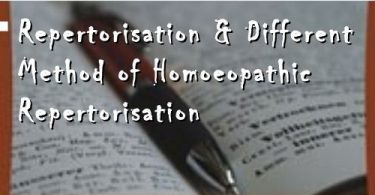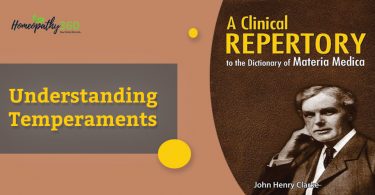APPLICATION OF FEVER TOTALITY OF BOGER BOENNINGHAUSEN’S CHARACTERISTICS AND REPERTORY (BBCR)
INTRODUCTION
• Author: Dr Cyrus Maxwell Boger
• Published in 1905
• Number of medicines:464
• Number of chapters:53
• It is the combined observations and logic of Boenninghausen and observations of Boger
PHILOSOPHY:
1. Doctrine of complete symptoms and concomitants: Consists of Location, Sensations, Modalities and Concomitants
2. Doctrine of pathological generals: Tells the state of the whole body and its changes in relation to the constititution. Generalized changes in the tissues and parts of body eg- discharges, diathesis etc
3. Doctrine of causation and time: Causative modalities, time modalities are more definite and reliable in cases as well as medicines.
4. Clinical rubrics: Clinical conditions and diagnostic symptoms which are helpful in selecting remedies in the absence of characteristic, general symptoms in the case.
5. Evaluation of remedies: Taken from BTPB, 5 Grades
• CAPITAL-5 marks1
• Bold-4 marks
• Italics-3 marks
• Roman-2 marks
• (Roman)-1 mark
6. Fever totality: Unique contribution of Boger, contains many subsections with all stages of fever along with their modalities and concomitants
7. Concordances: Based on the same principle as is followed in Therapeutic Pocket Book. Has 125 remedies. Deals with relationship of remedies, helps in finding second prescription.
PLAN AND CONSTRUCTION
1. Materia medica part: 140 medicines
2. Repertory part: 464 medicines, 53 chapters
3. Concordance part: 125 medicines
CHAPTERS
• BBCR contains total 53 chapters, which begins with Mind, sensorium, vertigo then includes all parts of the body according to Hahnemann’s anatomical schema i.e. from Head to Lower extremities, then followed by sensations and complaints in general, glands, bones and skin.
• It is then followed by sleep, dreams, fever and compound fever and then in the end conditions in general, general modalities and concordances.
FEVER TOTALITY
• Fever totality is a unique contribution of Boger. It has many rubrics and sub rubrics.
• Main sources of this chapter are the Therapeutic Pocket Book and Repertory part of intermittent fever.
• The arrangement of the chapter on fever is self explanatory. From the practical point of view, this chapter is of immense use as they help to repertorize any simple as well as complicated cases of fever.
• This has many pathological types of fevers, and also rubrics related to circulation, heartbeat, pulse etc.
• Each stages of fever like chill, heat and sweat along with their concomitants under different headings are really valuable at bedside practice
• The sub sections ‘Partial cold’ ‘Partial heat’ ‘Partial sweat’ are useful not only in cases of fever but also in non- febrile cases.
CONSTRUCTION OF FEVER CHAPTER
FEVER
Pathological types
Blood
Circulation
Congestions
Palpitation
Time
Heart beat
Pulse
Time
Aggravation
CHILL
Partial chill
Coldness
Partial coldness
Shivering
Time
Aggravation
Amelioration
Concomitants: Mind- Sleep
HEAT & FEVER IN GENERAL
Partial heat
Time
Aggravation
Amelioration
Concomitants: Head- Sleep
SWEAT
Partial sweat
Time
Aggravation
Amelioration
Concomitants: Mind- Sleep
COMPOUND FEVERS
Beginning with chill
Beginning with shivering
Beginning with heat
Beginning with sweat
APPLICATION OF FEVER TOTALITY
PATHOLOGICAL TYPES
• This includes various types of fevers such as Bilious, Gastric, Rheumatic, Traumatic, Typhoid, Yellow fever etc.
• These can be used for reference purpose and final selection of the remedy
• This is also applicable in cases where there is no characteristic expression, and repertorization has to be done using diagnostic or clinical rubrics. Then these rubrics can be taken as diagnostic rubric.
• It also has a rubric ‘Intermittent and periodicity in general’ under which many periodicities are given
BLOOD
• This section includes various types and characters of blood
E.g.: Arid, black, clotted, offensive, stringy, thick …
• This is applicable in any hemorrhagic conditions where the blood has any of these characteristic features
CIRCULATION
• This section includes rubrics related to blood circulation, and also various conditions related to blood vessels
E.g.: Circulation affected
Blood vessels, aneurisms
distended, swelled
inflamed, phlebitis
varicose
• Hence this section can be applicable in conditions like Aneurysms, Varicose veins, Phlebitis
CONGESTIONS
• This has rubrics for accumulation and rush of blood
• It has Congestion in general and also to various body parts like head, eyes, face, abdomen etc
• These are useful in cases where patients has the subjective sensation of rush of blood to certain parts of the body
• There are also rubrics like Anemia, Ebullitions, Plethora
PALPITATION
• There are rubrics related to palpitations, some causative factors for palpitation and some complaints associated with palpitation
• E.g.: Palpitation, in general,
audible
coition from
drugging from
goiter with
nausea with
• Is applicable in conditions with palpitation and its associated symptoms
HEART BEAT
• In this section, different rubrics related to heart beat has been given
• E.g.: hear beat, audible
fluttering
intermittent
irregular
visible
• This section is applicable in many cardiac diseases where there is change or alteration in the heart beat e.g.: Arrhythmia, Tachycardia, Atrial fibrillation etc
PULSE
• Different types, characters and alterations in pulse are given under this section.
• There are rubrics like : pulse, abnormal
Pulse, full
hard
imperceptible
irregular
thread
• Applicable in conditions with abnormal pulse findings such as tachycardia, atrial flutter, hyperthyroidism etc
CHILL
• Includes general chilliness, partial chill, partial coldness, shivering along with the modalities and many concomitants of chill
• Applicable in cases of fever where the chill stage is predominant and has concomitants
• Partial chill and coldness rubrics can also be applicable in non- febrile cases where there is coldness in only certain parts of the body.
• It covers all subjective and objective symptoms of chill
HEAT AND FEVER IN GENERAL
• This section includes general conditions of heat and also partial heat along with modalities and concomitants
• Applicable in fevers with prominent heat stage and also sensation of heat in certain specific parts of the body.
SWEAT
• Has rubrics of general sweatiness and also partial sweat in certain parts of the body
• Applicable in febrile cases as well as non febrile cases such as hyperhydrosis
• Since sweat is a physical general symptom and this section contains many rubrics related to location, odor, staining etc, it can be applied in any case where the patient has characteristic nature or pattern of sweat
COMPOUND FEVERS
• It has rubrics related to compound fever where the stages of fever i.e. chill, heat and sweat are interchanged
• Applicable in cases where the typical chill- heat- sweat pattern is not followed
CASE
PRELIMINARY DATA:
• NAME- Mr. P
• AGE-30 years
• SEX-Male
• ADDRESS-Vyalikaval
• OCCUPATION-Works in a call centre
• MARITAL STATUS-Married
PRESENTING COMPLAINT WITH DETAILS
1. On and off fever since 15- 20 days
• Onset-Sudden
• Course of fever-Has chill, heat and sweat stages
• Chill
-Lasts for 15 minutes
-Desires covering the whole body
-Concomitants- Restlessness, Rumbling in the abdomen
• Heat
-Starts in vertex then to whole body
– Removes covering
– Concomitants- Feels very weak, Headache in the vertex> bandaging, Throat pain, burning in eyes, Cough, Pain in joints
• Sweat-
– Profuse sweating for 15-20 minutes
– Gives only temporary relief
– Concomitants-Thirst increased
– Periodicity-For every 3-4 hours
– Modalities-rest
PERSONAL HISTORY
• APPETITE- Reduced
• THIRST- Increased during sweat stage, small quantity at frequent intervals
• DESIRES- Spicy food
• AVERSIONS- Sweets
• PERSPIRATION- Profuse after heat stage
• SLEEP- Disturbed due to fever
• THERMALS- Chilly
GENERAL PHYSICAL EXAMINATION
• Conscious, oriented
• Moderately built and nourished
• Tongue-White coated
VITAL SIGNS
• BP-120/80 mmHg
• PULSE-80/min
• TEMPERATURE- 100 0F
• RR-18 cycles/min
ANALYSIS OF THE CASE
TOTALITY
• Intermittent fever
• Chills start in abdomen
• Heat starts in vertex
• Restlessness during chills
• Profuse perspiration
• rest
• Headache vertex>bandaging
• Thirst increased
• Throat pain during heat
• Burning eyes during heat
REPERTORIAL TOTALITY
1. Fever, partial chills over abdomen
2. Fever, restlessness
3. Fever, partial heat, headache, vertex in
4. Fever, sweat, in general
5. Fever, heat concomitants, pain head
6. Fever, sweat concomitants thirst
7. Fever chills, time, night
8. Fever, intermittent, periodicity
9. Appetite, desires, spicy things
10. Appetite, aversion, sweets
REPERTORIAL RESULT
• China-32/9
• Verat alb-29/8
• Pulsatilla-25/7
• Nux vom-25/6
• Sulphur-21/5
INVESTIGATIONS– Malarial parasite positive (p. vivax)
NOSOLOGICAL DIAGNOSIS– MALARIA
REMEDIAL DIAGNOSIS– CHINA
PRESCRIPTION
• China 200
• TID/4 days
• PL BD/7 days
FOLLOW UP
• Had two attacks of fever with chills last week
• Throat pain, chest pain reduced
• All generals are better
• Rx
• China 200 BD/3 days
• PL BD/5 days
CONCLUSION
Fever totality of BBCR is a unique and important contribution of Boger to Homoeopathy.
It is useful applicable in solving many febrile and non febrile cases.
Since each stages of fever is given with various rubrics, time and other modifying factors and also many concomitants it becomes very much helpful in cases which have modalities and concomitants associated with each stage of fever.
REFERENCE
1. Boger CM, Boger Boenninghausen’s Characteristics and Repertory. B. Jain Publishers Pvt. Limited; 2016
2. Tiwari SK, Essentials of Repertorization, New Delhi: B Jain publishers; 2012.50,59.
Dr. ShriRaksha. B
MD-I Department of case taking and Repertory
Government Homoeopathic Medical College and Hospital
Bengaluru
UNDER THE GUIDANCE OF
Dr. Munir Ahmed R
MD (HOM)
Professor and PG Guide
Department of case taking and repertory
Government Homoeopathic Medical College and Hospital
Bengaluru





